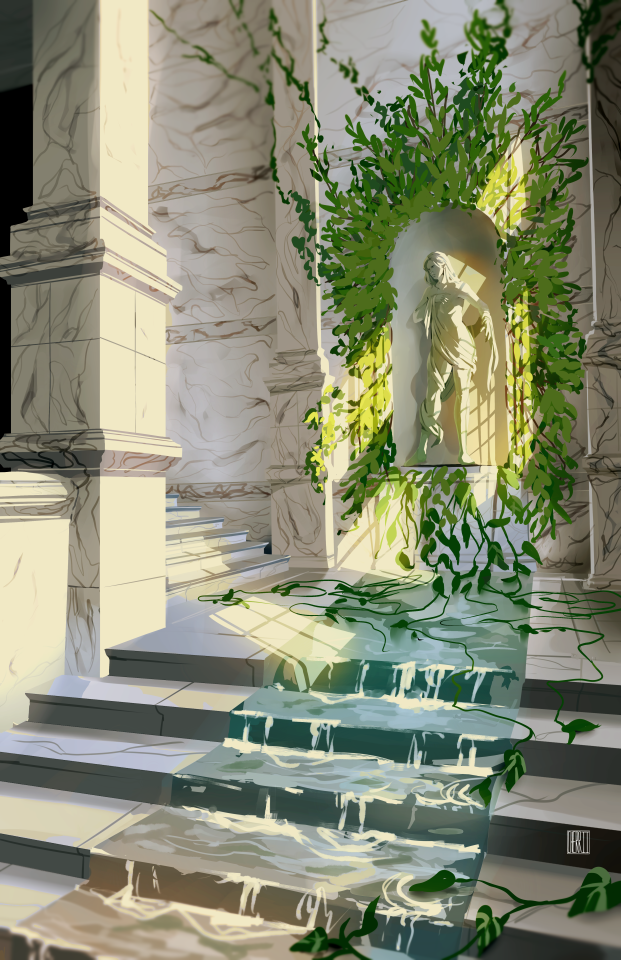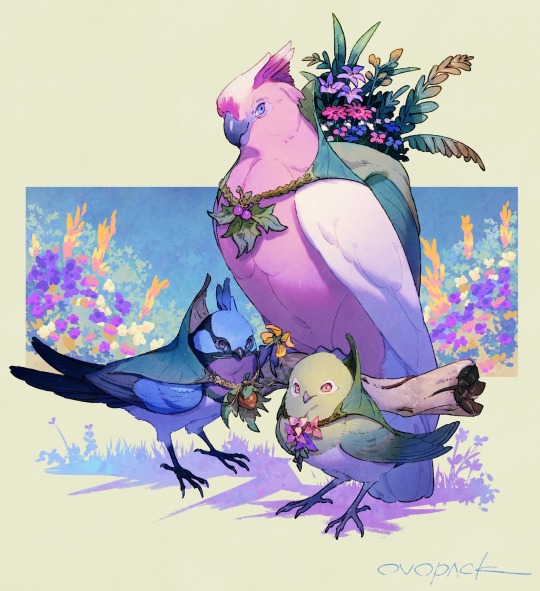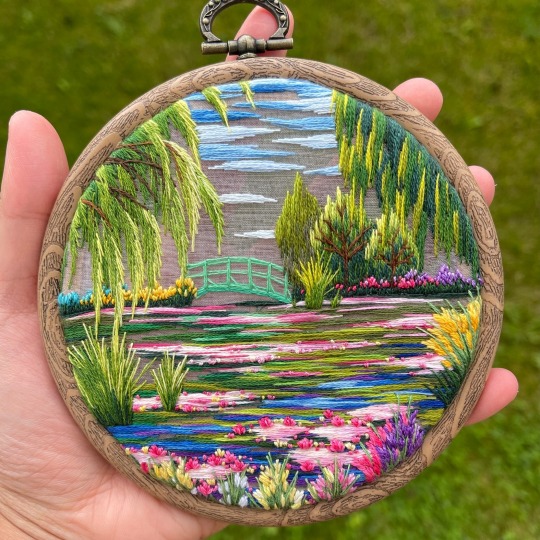Pfp by BOSS NORI || Enneagram, MBTI, Mythology, Art, Weapons
Don't wanna be here? Send us removal request.
Text
Lofter tutorial
Here’s a short tutorial on how to sign up and navigate Lofter, which is like the Chinese version of Tumblr! It’s not as popular as Weibo, but you can find a variety of Chinese artists there. Anyway you can choose to use either the app or the site ->
APP TUTORIAL
Firstly just download the app from your app store

If you are using the app to register, you will come to this page:

Click 注册 and it will lead to this:

You can register an account using your WeChat/ QQ/ Weibo account (or register using a Chinese phone number, which I assume all of us don’t have). I registered using WeChat, just click on the icon and your account will be set up! After that just key in your username and you are done.
On the app page the icons at the bottom of the page are home, discover, news and your account. To search for the users/ tags you want to follow go to the discover page and click on search

Anyway things get kind of tricky here because most of the usernames and tags are written in Chinese… I’ll just link Djun’s and a few other artists’ blog below so you can check them out without typing in Chinese 😂😂
SITE TUTORIAL
Similarly if you use the Lofter site to register an account you will see a similar page (you can use your email to register an account if you are using the site!):

If you used WeChat to set up your account like me click on the WeChat button and there will be a QR code available for you to scan:

Just scan it with your WeChat app and you will be able to log in, you will be directed to your Lofter dashboard:

Anyway here’s Djun Lofter and a couple of other BL/interesting artists for you to check out if you are interested!
Djun
恶魔吃烤鸭
夜晚吃肉的衝動
王各各
宣哲
眠狼/ RDJlock
缄默症
Hope this helps!
398 notes
·
View notes
Text


The creature who fell in love with the light
[Watercolor and gouache, based on ‘The Fog Horn’ by Ray Bradbury]
43K notes
·
View notes
Text
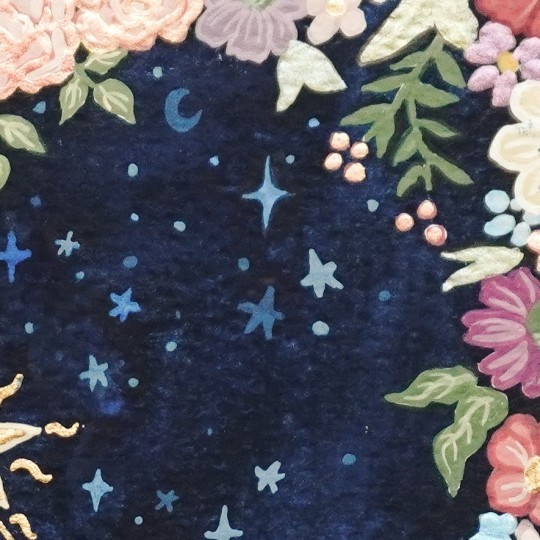







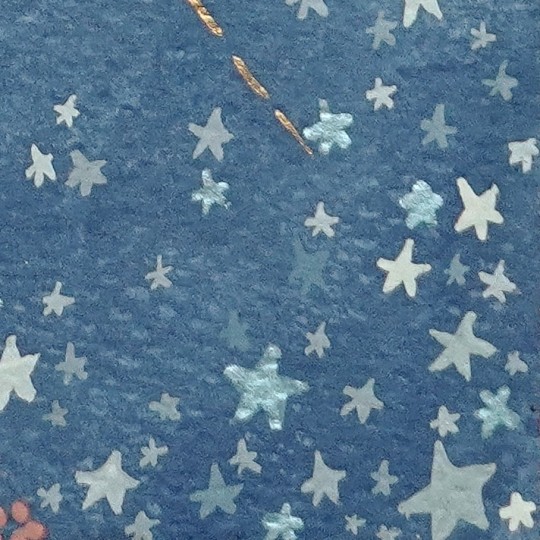
Various stars & moon details from my gouache paintings 🌙✨
96K notes
·
View notes
Text






Moments in time, preserved through sentiments Twitter | Ko-Fi | Patreon
232K notes
·
View notes
Text
Psychological Defense Mechanisms and the Enneagram
(If you are self-typed correctly, you should be able to come up with several specific examples from your own life of using the psychological defense mechanisms of your core type. Since your secondary type is also quite strong, you may also have examples to go with your higher / lower fix.)
Sourced here.
1) Ones use reaction formation to avoid anger (i.e. direct anger) and stay in control of their feelings and instincts in order to maintain a self image of being right. Reaction formation is feeling one thing and then expressing the opposite or at least something unrelated, such as feeling resentful but acting nice, feeling a need to rest but working harder. The relentless demand of the inner critic to be good and do good at all times replaces personal needs and shuts down feelings. 2) Twos use repression of personal needs and feelings to avoid being needy and to maintain a self image of being helpful. Repression is putting one’s “unacceptable” feelings and impulses out of awareness by converting them into a more acceptable kind of emotional energy. Self-esteem depends on winning the approval of others. This can take the form of being overly nice, flattering people, and a superficial friendliness. Or it can show up as an attitude of entitlement. Their genuine need for connection takes the form of “you need me.” 3) Threes use identification to avoid failure and maintain a self image of being successful. Identification is stepping into a role so completely that Threes lose contact with who they are inside. The pressure to keep up a winning image prevents access to personal feelings and needs. Attention goes to the external environment: the tasks to be done and the expectations of other people. Threes find it very difficult to drop the role, or drop the image, since they get so much positive reinforcement in a society that values achievement and success. 4) Fours use introjection to avoid ordinariness and maintain a self image of being authentic. Positive introjection is an attempt to overcome the feeling of deficiency by seeking value from an idealized experience, work or relationship and internalizing this through the emotional center. This also leads to negative introjection: Fours tend blame themselves for whatever goes wrong in personal relationships. Their experience of loss or abandonment can take form inside as a self-rejecting voice (a negative introject) which leads to pervasive feelings of unworthiness. 5) Fives use isolation to avoid the experience of inner emptiness and maintain a self image of being knowledgeable. Isolation can be physical withdrawal from others, but it also means withdrawing on the inside from one’s emotions and staying up in the head. Acquiring knowledge becomes a way to create safety and self worth, but an over-emphasis on the intellect prevents Fives from connecting with the life force in their bodies and the support available in relationship with others. 6) Sixes use projection to avoid rejection and to maintain a self image of being loyal. Projection is a way of attributing to others what one can’t accept in oneself, both positive and negative. Positive feelings are projected onto a romantic relationship or an external authority figure in order to assure safety and justify loyalty. Negative feelings are projected onto others to justify internal feelings of fear and distrust. Sixes support their projections by finding and amplifying the information which fits their premise. 7) Sevens use rationalization to avoid suffering and to maintain a self image of being OK. Rationalization is a way of staying in the head, explaining away or justifying things in order to distance from painful feelings and refuse to take responsibility for their behavior. Everything can be re-framed towards the positive. Their ability to think of new options and possibilities allows Sevens to leave the present moment with its limitations and live in a seemingly unlimited future. 8) Eights use denial to avoid vulnerability and to maintain a self image of being strong. Denial means to power up in the body center and forcefully re-direct energy and attention through willfulness and control. Vulnerable feelings are automatically put away and not experienced. Emotional energy is reduced, while instinctual energy is increased. Receptivity necessarily involves some vulnerability, so Eights seek to impact the world and other people rather than be receptive to them. 9) Nines use narcotization to avoid conflict and to maintain a self image of being comfortable or harmonious. Narcotization is using food and drink, entertainment, or simply repetitive patterns of thinking and doing to “put oneself to sleep”. Even productive activities can keep Nines narcotized if they become too habitual. Avoiding conflict with others keeps Nines from being fully present in relationships. Avoiding internal conflict leads to inertia and self-forgetting.
669 notes
·
View notes
Text

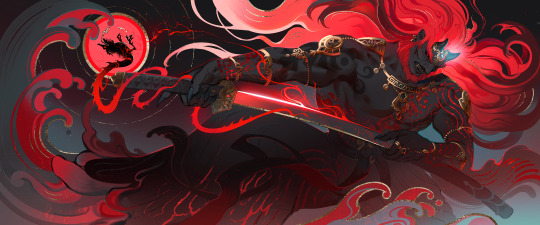
Throughout Heaven and Earth,
only Darkness shall remain 🩸
support me on pixiv fanbox melontoyo.fanbox.cc
16K notes
·
View notes
Text
7 deadly sins
pride: screenshotting something you said on discord and then posting it
gluttony: ask games
wrath: anon hate in general
greed: hoarding urls
lust: horny on main
envy: vague posting about bigger accounts
sloth: no tagging system
46K notes
·
View notes
Text
Type Spotting by Temperament
Some rules of thumb for sorting people by temperament. Types who share the same temperament tend to possess similar core values. Please see the Type Spotting Guide to learn how to do a more thorough type analysis.
Okumaya devam et
222 notes
·
View notes
Text
ENTP
*ENTP about to make a stupid decision*
Ne: THIS IS A GREAT IDEA
Ti, Fe, Ni: *in unison* it’s a terrible idea
Fe: QUICK TI HOW DO WE STOP NE?! IT’S SPROUTING OUT POSSIBILITIES FASTER THAN WE CAN KEEP UP WITH
Ti: I know, I know! Calm down, there’s a logical solution to this, I just need time to present it.
Ti: Quick, I need you to distract Ne!
Fe: Uh- Uh?? OKAY???
Fe: Ne, think of how stupid this is! Even if it does work, you’re going to hurt our friend’s feelings! : ( This really really isn’t socially acceptable, even for us! We’re just going to burn bridges down and feel guilty and awful afterwards!!
Ne: *STILL LAUGHING MANIACALLY*
Fe: TI I DON’T THINK IT’S WORKING, WHAT DO I DO???
Si: I got this
Si: Hey Ne, remember when we did almost the exact same thing in seventh grade
Ne: HAHAHAHAh- what.
Ne: oh gOD NO
Fe + Ti: ???
Ti: It’s…. working??
Ti: Si, keep it up! I almost have a solution! Fe, I need more social implications here, keep helping!
Si: *chanting now* Seventh grade….seventh grade…..seventh grade
Ne: *SCREAMING*
Fe: It’s a bad idea!
Ti: …Aaannnd here’s a logical summary of why it’s a bad idea
*ENTP as a whole*
….Yeah… I don’t think I will after all…
135 notes
·
View notes
Photo

Me, 20 minutes ago: THERE ARE 9 ALIGNMENTS… AND 9 ENNEAGRAM TYPES… I MUST MATCH THEM UP!!!!
Note: This is purely for entertainment. If you use this to determine your type or alignment, please just use this as a starting point.
476 notes
·
View notes
Text
Parenting Style Influence on Child Personality
It’s commonly accepted that the Enneagram type has both a genetic component and an environmental component and it’s their interaction that decides the final typology. This theory states that there are three major innate orientations of the personality and that we are all born with one of them prevalent over the other two. Furthermore, it suggests that each of the nine Enneagram types is a consequence of the way in which the child’s preferred inborn orientation (the hereditary component) interacts with the one that their parent - or main caretaker - has towards them in the forming years (the environmental component).
Three Basic Orientations
The three orientations are an expression of the Law of Three, on which the entire Enneagram concept is based. This law states that there are three kinds of forces that act in the human nature - the Active force, the Responsive force and the Neutral force and that each person is born with a natural preference for one of them.
These three forces are similar to the Hornevian Groups (Assertive, Compliant and Withdrawn respectively), but they are used here in a different context, to describe inborn traits and parental styles rather than established personality.
Here are the associated traits for each basic orientation:
Active: demanding, assertive, bossy, outspoken, intimidating, egocentric, expressive, willful.
Responsive: supportive, responsive, engaging, affectionate, friendly, sympathetic, cooperative.
Neutral: avoidant, withdrawn, indifferent, apathetic, absent, reserved, ignoring, neglectful.
Apparently, each child comes into the world with one of these predefined attitudes toward their environment and each parent will address their children with a certain parenting style, which can be, but isn’t necessarily determined by their Enneagram type.
Any Enneagram type can use any of the three orientations to attend to their children. For example - an Enneatype 5 can be a Responsive parent, an Enneatype 8 might use a Neutral approach with their offspring, while an Enneatype 1 may lean towards an Active style. What determines the environmental component of a child’s future type is not necessarily the main caretaker’s type, but rather their particular approach to relating to the child.
Nine Interaction Scenarios: Child vs. Parent
Here are the 9 childhood scenarios that correspond to each of the 9 Enneagram types. ACTIVE CHILD vs ACTIVE PARENTS This scenario is thought to produce Enneagram type 8. The child and parent experience open conflicts on a regular basis. They both have different agendas and oppose each other, thus giving rise to power struggles and explosive arguments. The Active parent is impatient and intolerant of the child’s rebellious nature and tries to impose his will in an authoritarian fashion. The Active child, on the other hand, becomes aggressive, argumentative and persistent in getting his own way. The relationship becomes a sort of battlefield, which is how the child will later perceive the world around him (type 8). Such a childhood scenario encourages the child to develop a keen eye for spotting other people’s weaknesses and a thirst for imposing their will in an overly aggressive fashion. They learn to be assertive, strong and deny their fears and feelings of intimidation. These are the traits they needed to have in order to stand up to their domineering parents and still keep their own Active inborn approach. ACTIVE CHILD vs RESPONSIVE PARENTS This scenario is thought to produce Enneagram type 7 The demands and concerns of the Active child are usually received with benevolence and a supportive, encouraging attitude. This creates a tolerant environment in which the child can express himself openly and receive attention without much effort from his part. The Active child becomes self-confident, carefree and expects his interactions to be positive and favorable to his needs. The Responsive parent is sympathetic and loving, thus stimulating the child’s playful, self-expressive side and giving him a good deal of personal freedom. This childhood scenario promotes a cheerful, optimistic type who knows how to charm and manipulate others into easily getting his way. Entertaining and expressive, such a child may later expect instant gratification for all his needs and desires and avoid investing time and effort into long-term goals. ACTIVE CHILD vs NEUTRAL PARENTS This scenario is thought to produce Enneagram type 4 In this relationship, the child usually tries to grab the attention of an indifferent or absent parent, by expressing himself with increasing intensity, until a response is achieved. The Active child may act in a dramatic, exaggerated manner, attempting to get his message across to the unconcerned caretaker. The Neutral caretaker will typically ignore the child’s emotional needs, making the youngster feel frustrated, misunderstood and possibly abandoned. Sometimes the child turns these negative feelings inwardly, believing that they are unlovable and not special enough to deserve attention. This scenario teaches the Active children that they are different than other children that seem to be getting the support they lack. They want to make themselves heard so they amplify their feelings, resorting to dramatic expressions of their emotions. These children may later become overly sensitive, artistic and theatrical, but also melancholic, self-loathing and depressive. RESPONSIVE CHILD vs ACTIVE PARENTS This scenario is thought to produce Enneagram type 1 This interaction is generally centered around the parent’s agenda, to which the child will subscribe in order to receive the desired approval. The Active parent will be demanding, dominating and will criticize any perceived “bad” behavior. The Responsive child, on the other hand, is unusually sensitive to criticism so he will try to adjust and adhere to the parent’s values and perspectives, by being obedient, well-behaved and an altogether “good kid”. This attitude will help him build the desired rapport with the fastidious main caretaker. With time, the child will learn to put aside his real needs and wishes in order to do the right thing, to be correct and morally ethical. These types will prefer to have a clear set of standards and rules to adhere to and will only feel worthy and lovable when they live a righteous life, in accordance with their upstanding principles. Their parents taught them that acceptance comes only through obedience and discipline. RESPONSIVE CHILD vs RESPONSIVE PARENTS This scenario is thought to produce Enneagram type 6 This child will usually establish a very close relationship with his caretaker and will tend to become dependent on the nurturing, affectionate figure that offers him support and understanding. A strong desire for harmonious relationships is created and the Responsive child will reject and feel threatened by conflicts and lack of stability. Such types will seek playmates and groups that share their values and interests and will take an ‘us against the world’ stance, typically towards unfamiliar people and circumstances. These Responsive children will prefer to play by the rules in order to keep themselves safe from any disharmony that will endanger their comforting, supportive relationships. They will be playful, endearing and loyal to their chosen groups and intimates, while at the same time remaining alert and vigilant to avoid any conflicts and hidden threats. Suspicion of other people’s motives can arise as a protection from abandonment and rejection - they are in fact very afraid of losing their safe, nurturing grounds. RESPONSIVE CHILD vs NEUTRAL PARENTS This scenario is thought to produce Enneagram type 2 In this case, the Responsive child will act in a pleasing, appealing matter but will most likely encounter an indifferent attitude on the part of the Neutral parent. Confronted with this apathy and lack of interest, the child can only resort to becoming even more pleasing and irresistible to the parent, until he manages to break through the shell of indifference and obtain the desired rapport. Such types will be helpful, empathetic, lovable and attractive and will have a knack for getting on the same wavelength with their parents - they know when and how to approach them in order to obtain their attention. Growing up, the Responsive children will learn to intuitively sense and assess other people’s moods and will know exactly how to fulfill their needs in order to be appreciated and loved by them. They have a wide repertoire of seductive behaviors and know exactly which approach to use in order to successfully engage others into a close relationship. NEUTRAL CHILD vs ACTIVE PARENTS This scenario is thought to produce Enneagram type 9 The Neutral child is often overwhelmed and frightened by the controlling, domineering Active parent. Lacking self-assertion skills, he prefers to withdraw and stay out of the way, minimizing his own needs and avoiding the parent as much as possible. On the few occasions the child reaches out to the caretaker, he ends up feeling rejected and bullied around for no apparent reason, which causes him to withdraw again. The loneliness, however, also feels like rejection and soon enough the youngster will be ambivalent towards both being alone and being with others. Most of the time, a compromise will be made. This type will seek out company but will not invest themselves in it, preferring to keep in the background and go with the flow, partly removed from their actual situation. When alone, they will avoid introspection, which will bring about old feelings of depression and rejection, instead they’d rather numb themselves out with food, TV or other unimportant routines to avoid emotional pain. NEUTRAL CHILD vs RESPONSIVE PARENTS This scenario is thought to produce Enneagram type 5 In this relationship, the Responsive parent is inclined to give a lot of unrequested attention to the Neutral child, who perceives his parent’s supportive and affectionate attitude as a form of smothering. The youngster will tend to withdraw from his environment, preferring solitary activities and contemplation, but as opposed to the previous scenario (of type 9), loneliness will not be accompanied by a feeling of rejection. At the contrary, being alone is a matter of choice and it gives a feeling of security and well-being, knowing that there is always someone to communicate with when they decide to seek out company. Such children are genuine loners, who prefer and enjoy their solitude. They are introspective, insightful and love learning and discovering things on their own, usually rejecting any help or intervention from the outside. They are afraid of being intruded upon because their parents used to make a fuss over them and suffocate them with attention and demands for closeness. NEUTRAL CHILD vs NEUTRAL PARENTS This scenario is thought to produce Enneagram type 3 This Neutral child’s solitude is encouraged by his parent’s own withdrawal and indifference, which doesn’t necessarily make the Neutral child feel openly rejected, but rather intrigues and challenges him. Serious, focused and rather unemotional, this youngster will most likely try to fulfill his occasional need for attention by impressing his parents with outstanding accomplishments and high aspirations, which make him feel worthy and valuable in their eyes. Later in life, these children become motivated achievers who put great emphasis on results, performance, efficiency and a successful image that will make others appreciate and admire them. Deep inside they dislike being ignored because it makes them doubt their own value, therefore they tend to hide their weaknesses and flaws and project a desirable, attractive, “I-have-it-all” persona.
937 notes
·
View notes
Note
Can you please compare the blind spots of the instinctual variants?
Excellent question. Depending on how these blind spots are stressed within the stacking and enneagram context, they may or may not play a very important role. I regard them the “life lesson” aka the field opposing a person´s comfort zone that they have to conquer to achieve something in a healthy way. Read between the lines - everything I list is an indirect strength and already present unconsciously.
Profiles of the Three Blind Spots
sx blind spot: Neglect of partnership needs, lack of depth in their everyday connections, feeling disjoined from the core of people and life in general despite possessing social grace, a falsely assumed feeling of eerie incompleteness. Romantic unease. A compelling vicious circle of unfaithfulness, a fickle and shy persona, non-assertive approach, not wanting to get to the root of things (–> avoidance of getting “real” or the extreme), love of routine and safety, hypocrisy, accepting the status quo blindly.

so blind spot: Neglect of social groups, detrimental withdrawing tendency or socially antagonistic streak, overemphasis on self or a partnership, lack or altruism, overindulgence, preference of a private setting, pessimism. Self-importance. Obsession/addiction, impoliteness, unrealistic views, misanthropy (!). Snarky, desperate lone wolf. (You and) me against the world. Hatred for social gatherings. Rejecting everyone but expecting help/ pitying oneself when all hell breaks loose. Clingy. Assuming everyone´s out there to get them. Isolating self-image from societal context. Too rebellious for their own good.

sp blind spot: Neglect of personal needs, disregard of the important role that material goods play in today´s society, lack of thriftiness. Recklessness. Workaholism brings about downfall, biting off more than one can chew, dependency that compensates for lack of self-reliance. Not wanting to settle, constant unrest, a hidden insecurity. Ending up broke. Not being able to be alone. Rose-coloured glasses. Not trusting your skills. Unconsciously destroying oneself through affiliations, not coming to terms with oneself and trying to find what you lack within others (and failing because only you can complete yourself). Total exhaustion. Overestimating your resources.

799 notes
·
View notes



